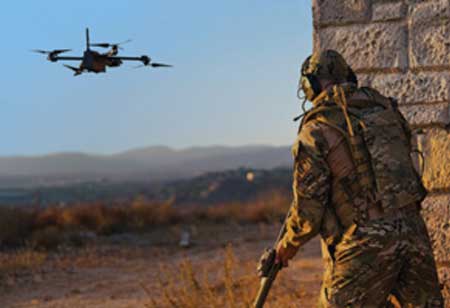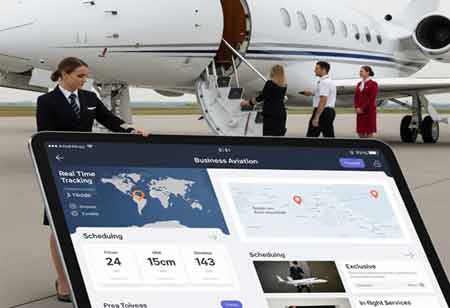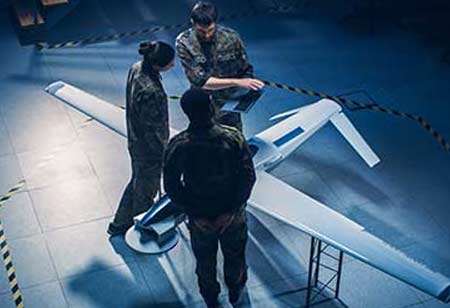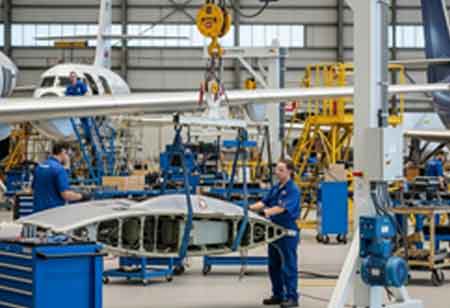Night vision military drones are redefining modern warfare by delivering unparalleled surveillance and intelligence-gathering capabilities in low-light or no-light conditions. These drones are equipped with cuttingedge thermal imaging and sensor technologies, enabling precise tactical operations that were once unimaginable. With technological advancements and growing security needs globally, the market for night-vision military drones is expanding rapidly.
Market Dynamics: The Surge in Demand for Night Vision Technology
The global demand for night-vision military drones has surged due to increasing military spending, the need for enhanced surveillance in complex environments, and the growing focus on modernizing defense capabilities. Drones with nightvision technology are instrumental when visibility is limited, such as during nighttime missions, covert operations, and low-visibility weather conditions like fog or smoke. Military worldwide are heavily investing in these technologies to gain a tactical advantage.
One notable trend is the integration of infrared (IR) and thermal imaging sensors with night vision technology. These sensors allow military drones to capture clear images and video in total darkness. For example, the MQ-9 Reaper drone integrates thermal imaging with night vision to monitor and eliminate targets even under darkness.
Artificial intelligence (AI) and machine learning (ML) in military drones are becoming more prevalent. AI algorithms can help analyze night vision footage in real-time, enabling rapid decision-making and reducing the time required for manual analysis. Certain drones incorporate AI to detect and track targets autonomously, making them more effective in dynamic combat scenarios. As AI continues to evolve, drones’ ability to perform sophisticated missions during nighttime operations will improve, allowing for more precise strikes and intelligence gathering.
The night vision-equipped military drones have become smaller, more agile, and capable of longer flight times. These advancements in drone design allow military forces to deploy drones in diverse environments, including urban settings, dense forests, and mountainous terrains. Miniature drones equipped with advanced night vision technologies are now used for surveillance, reconnaissance, and search-and-rescue missions, providing valuable intelligence without risking human lives.
Overcoming Challenges with Innovative Solutions
Despite advancements, the night vision military drone sector faces significant challenges. High costs for development and maintenance, particularly for infrared sensors, cameras, and batteries, make it difficult for smaller organizations to invest in these technologies. Companies are adopting modular designs to reduce costs, allowing military groups to upgrade components rather than buying new systems. This makes drones more versatile and cost-effective. Additionally, drones are vulnerable to cyberattacks and interference, so companies are developing advanced encryption and anti-jamming technologies, including frequency-hopping capabilities, to ensure security.
Another challenge is the large amount of data processing required for integrating night vision technology. The data from infrared and thermal sensors can overwhelm drone systems, potentially leading to delays or malfunctions during missions. Companies are enhancing onboard computing capabilities and incorporating edge computing techniques to address this. This allows drones to process data closer to the source, improving decision-making speed and ensuring more effective operations in the field.
Capitalizing on the Night Vision Drone Market
The night vision military drone sector is brimming with exciting opportunities and advancements for stakeholders. The increasing demand for advanced military drones offers defense contractors a growing market. As the demand for advanced military drones continues to rise, defense contractors find themselves in a thriving market ripe for innovation. Companies that can provide high-performance drones with state-of-the-art night vision and thermal imaging technology are well-positioned to capture a significant share of this growing industry. Additionally, developing modular drones presents opportunities for long-term partnerships with defense organizations, as these systems can be upgraded over time to meet evolving operational needs. Enhancements in AI and machine learning enable drones to autonomously identify and track targets, which reduces human error and boosts operational efficiency.
These innovations in drone miniaturization are expanding the potential applications for night vision drones beyond traditional military uses. Smaller drones equipped with night vision technology are ideal for covert operations, intelligence gathering, and reconnaissance in urban or densely populated areas. This opens new markets for companies, including law enforcement, search-and-rescue operations, and private security firms. The increasingly complex global security landscape has also led to a growing need for international collaboration in developing next-generation drones. Countries and defense organizations are partnering with industry leaders to leverage the latest technologies and stay competitive, creating opportunities for stakeholders to enter new markets, expand their reach, and form strategic alliances.
Night vision military drones are advancing defense technology, enhancing surveillance and tactical operations in low visibility. Despite challenges like cost and cybersecurity, innovative solutions are emerging. This sector offers key opportunities for stakeholders to meet the growing demand and potentially reshape modern warfare. Companies should consider exploring this exciting field.









